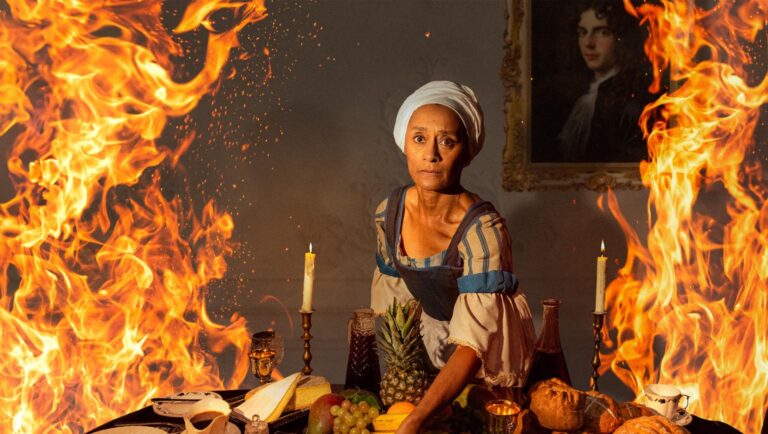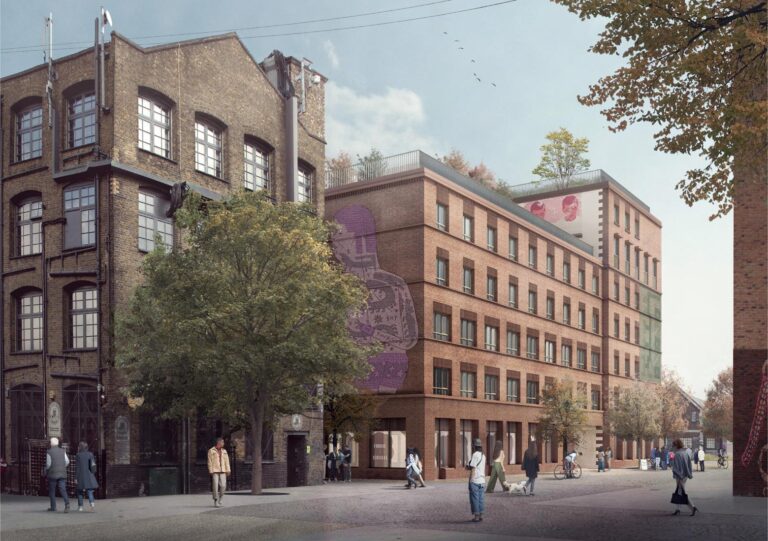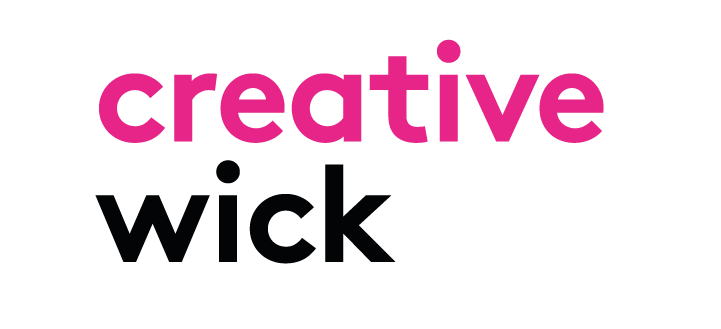
Review: ‘The Women of Llanrumney’ at Stratford East
Devastating dark comedy shines a light on the many betrayals of the slave era
GUEST EDITOR, Spring 2024: William Chamberlain is a solicitor, senior partner at Counterculture LLP and serial social entrepreneur who, since 2008, has co-founded Hackney Wicked CIC, founded Creative Wick and co-founded the HWFI Community Development Trust. He is a PhD researcher at Loughborough University London working on sustainable models of creative led regeneration.
I moved to Hackney Wick in 2008 to see how the Olympic legacy was being delivered. I was a sponsorship lawyer and had been part of the London 2012 bid team which made the promise that “the communities surrounding the Olympic Park would benefit from the Games”.
I’m not sure many of us on the bid appreciated just how many artists were living and working in Hackney Wick and Fish Island at the time, but a 2009 land use survey put the number of creative workspaces and studios at more than 600, making it one of the most densely populated artist communities in the world. And we all know what usually happens to artist communities when the developers arrive…
Inspired by the Hackney Wicked Art Festival, which launched that first summer as an artist-led grassroots celebration of “art for art’s sake”, I started a local creative business network – the Cultural Interest Group (CIG) – in 2010, which still meets monthly. The CIG represents all sectors of the local business community: entrepreneurs, SMEs, academics, elected councillors and local authority officers, the third sector, developers, cultural institutions, affordable creative workspace providers, funders, corporations, artists and residents.
Its aim is to facilitate as many personal cross-sector relationships as possible through collaboration and the sharing of resources, experience, knowledge and opportunities. Membership is free, inclusive and open to anyone and the mix of attendees provides an innovation network with opportunities to collaborate with a range of different stakeholders.
It’s the members that turn up to meetings each month that make things happen, and we talk about ‘engineered serendipity’ – we never know who exactly is going to be there on the day. It was at one of these CIG meetings that a member asked the LLDC for Creative Enterprise Zone protection back in September 2013 – the GLA announced the initiative in 2017.
It was members that lobbied over many years for the permanent protection of affordable creative workspace through changes to local authority and planning policy, and we now have Trowbridge Gardens and The Bath House being operated by local providers.
Meanwhile, Bow Arts Trust will soon open thousands of square feet of new, permanently affordable creative workspace in the Hackney Yards development surrounding the station. CIG members also started the first issue of The Wick newspaper in 2011 and the network is still where we source most of our stories today.
CIG members initiated the Save Hackney Wick campaign against the part-demolition of Vittoria Wharf in 2016, that Outset Studiomakers supported. This then encouraged the London Creative Land Trust to make its first acquisition at Stone Studios, now operated by Mainyard Studios and Cell Projects, the original pre-development studio provider on the site.
And it was four not-for-profit member organisations talking about setting up a community trust at a CIG in 2011 who eventually founded our local Community Development Trust in 2017. The CDT now has two meanwhile use sites (with Yodomo’s Textile Reuse Hub and The Loop circular economy hub on Wallis Road), and is in negotiations with developers on a number of long-term sites in the area.
I’m reassured by the role being played, and the social impact generated by, the many third sector organisations based here – good people doing good things in a good way – and there seems to be a knock-on effect that’s influencing some of the more commercial operators to behave in a more considerate, supportive and sustainable way.
In a place changing as quickly as ours, there are always tensions and bumps in the road. Mutually beneficial cross-sector relationships take time to build. Respect and trust has to be earned over a long period of time, but I think a replicable and transferrable model for permanent, sustainable creative placemaking is emerging here.
The idea is to encourage ‘inside-out’ regeneration ie. working with existing community assets. By working with the people that hold the soul of the place dear to their hearts, and ensuring that they have the chance to be part of its future, I hope that we can partially prevent the large-scale gentrification that often comes with development projects on this scale and retain the guardians of the heritage, history and –particularly here – the rebellious spirit of the place.
Despite the current global situation, cost of living crisis, rising rents and increasing levels of disadvantage, I’m hopeful about the future. We have the opportunity to prove that creativity really does make places better, and that a mutually supportive hyper-local business network can deliver opportunities for everyone, in a genuinely mixed use local economy, with an affordable price-point for all.
Art, culture and the creative industries bring people together, facilitate positive relationships, increase levels of resilience, cohesion and wellbeing, encourage openness and innovation and collaboration rather than competition.
In my opinion this model has the potential to tick all the Big Society, Corporate Social Responsibility and Environmental, Social and Governance boxes.
Creative Wick and The Loco, our partner on this paper, have recently been awarded a Westfield Creative Futures grant by the Foundation for Future London to develop the last piece of this social infrastructure model: a digital creative placemaking platform to complement the live monthly meetings, weekly email newsletter and monthly Wick Wednesdays.
In the coming months we’ll be working with a range of local stakeholders representing young people, the voluntary sector and our world-class neighbours at Here East, East Bank, Stratford Cross and the wider Olympic Park area to co-design a platform that encourages circular economy principles and the use of local supply chains.
I hope that Hackney Wick’s three pillar model of Connection through a locally trusted network, Communication via a digital and print media platform and Community Ownership of land use, equitable access to space and affordable rents through a locally-operated trust has the potential to help deliver an innovative solution towards solving some of the problems facing world cities today.
This editor’s letter first appeared in the Spring 2024 edition of The Wick print edition.

Devastating dark comedy shines a light on the many betrayals of the slave era

Youth sports, mentoring and community engagement powerhouse, BADU, is a vital locally-grown success story, says proud programme graduate Shannon Latouche

Taking things global from East London roots – my story

More than just another pizza and pasta parlour, we found ourselves falling for Figo

How developers proposing Hackney Wick’s first hotel, and a bold new co-living scheme, both reached out to the community, ensuring better results for everyone

London’s Deputy Mayor for Culture and the Creative Industries on Hackney Wick’s influence on Creative Enterprise Zones, the Olympic legacy and the arrival of East Bank
A joint venture in collaborative local media from:


In partnership with

Regulated by IMRESSS, the Independent Monitor for the Press CIC.
For more info on our complaints policy, or to make a complaint, visit FAQ.
